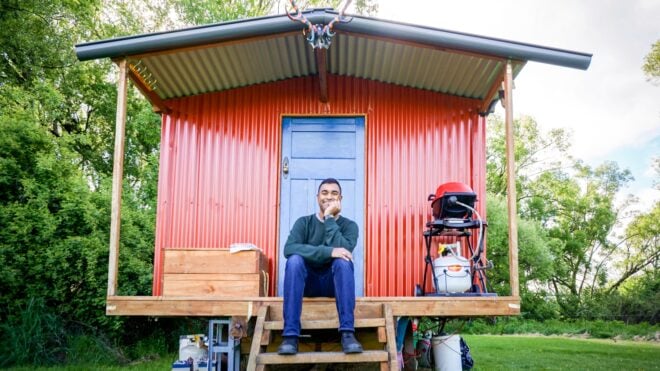
In this article
Freezing weather created a series of power failures throughout Texas in recent weeks. Without electricity, heat, and water, families were left to fend for themselves against the elements during the widespread power outage. As a mom, my heart ached for those struggling to keep the kids warm and I wondered if I’m prepared for an emergency like an outage that would last days.
Here’s what you should have in case of a power outage and what you can do to be safe and as comfortable as possible.
How to prepare for power outage

A power outage can mean much more than just losing electricity in the home. It can affect water distribution and sanitation, disrupt communications, and shut down many businesses that we rely on daily including grocery stores and pharmacies.
How to prepare for a power outage starts with how you would prepare for any natural disaster. A power outage will happen without warning so you need to have a plan in place for the unexpected. This includes creating a support network — this ideally includes people who you might be able to stay with if their power remains on or they have a generator to facilitate electricity.
-
Sign up for alert systems on your phone. This is where other disaster planning will help. Every home should have a crank or battery-operated radio so you can get updates on the outage. Look into a battery charger for your cell phone as well.
-
Always have a two-week supply of food and water on hand. This is non-perishable food that you can rely on if power is out for extended periods of time. In the event of a power outage, you’ll want to eat perishables first and then use your supply of emergency food. Remember that water may not be potable in all outage scenarios so having drinkable water on hand is critical.
-
Make sure that smoke alarms and carbon monoxide detectors have battery backups and check them regularly to make sure the batteries don’t fail. “Battery backup sump pumps are secondary sump pumps that can operate for up to 10 hours during a power outage," Jake Romano from John the Plumber told Mom.com. "This is a great addition to any home for safety and protection from flooding.”
-
Don’t forget that you can protect your electronics from the devastating surges that can happen during or after an outage. Make sure your key electronics such as computers are connected via a surge protector.
-
If you feel that electricity is critical for your personal or medical needs, look into back-up power sources such as a generator. Talk to your doctor about how to plan for outages and other natural disasters.
-
It’s natural to wonder how long power outages last. The answer is that it really depends. Some outages may last only a few minutes while others causes by massive infrastructure issues could last days or weeks. Your best bet is to plan for weeks and hope for an outage that lasts only minutes.
*how to prepare for power outage
*how long power outages last
What to do during power outage

Depending on how bad the outage is and what else might be down, you’ll want to plan on what to do during the power outage.
-
When the power goes out, the first thing you want to do is run the generator if you have one. Keep in mind that generators emit carbon monoxide and should not be used indoors or poorly ventilated areas.
-
If it is just the electricity that is out, you can still cook on gas stoves if you have them. For those who have gas ovens with electric ignitions, use a match to light the flame. Of course, outdoor grills are great for cooking as well. If the weather is not suitable to be outside, you can move the grill to a garage as long as the garage is open and well ventilated.
-
Using electric heaters for warmth, candles for light and grills for cooking are common during power outages, but be aware of the fire dangers all of these pose. Again, be aware of the deadly dangers of carbon monoxide poisoning that can result from the use of alternative sources of fuel or electricity for heating or cooking.
-
While you may have surge protectors on certain electronics but you will want to unplug appliances to protect them from unexpected power surges. Surges can damage appliances, so wait until power is back up and on consistently before plugging everything back in. You can leave one lamp plugged in and on to be your signal that power is back up.
-
Be sure to check in with friends, family, and neighbors to make sure everyone is okay and that they know your status. While you want to stay in touch, avoid the urge to text or be on social media non-stop. You’ll want to conserve your battery just in case. The Red Cross has great tips for staying connected and setting up alerts to keep you up-to-date on conditions.
Power outage tips and tricks

Texas mom Shirley Hines felt unprepared for the outage. “We had our disaster plan for hurricanes, but a deep freeze was another story,” she told Mom.com, While she had flashlights, what they needed was heat. “I remembered that you can use crayons as candles, so we huddled around a few of my daughter’s crayons.”
Even being prepared might not be enough to be comfortable. That’s normal for many people. Here are some power outage tips and tricks to keep in mind when the power is out and you don’t have a generator to replace it:
- Charge your phone in your car: Take some time to use your car to refresh cell phone battery life. If it’s cold out, enjoy the warmth of the car while it's on, just make sure it isn’t in a closed garage to prevent carbon monoxide poisoning.
- Strap a headlamp to a gallon of water: The water serves as a diffuser and helps create ambient light throughout the room.
- Bounce light sources off of mirrors: To get more light in a room, use mirrors to reflect it and illuminate walk paths and living spaces
- Use a washing machine as a cooler: If it’s the hot season, place ice in the washing machine with the food you want to store. It will insulate the cold and as the ice melts, it will drain without creating a mess
- Make a Crisco candle: Get a large tub of Crisco and stick a wick (or long piece of string) down into it. The candle can last some 45 days and provide some heat while lighting the room. Again, make sure to keep a close eye on candles and anything with an open flame, as they can be a fire hazard.




